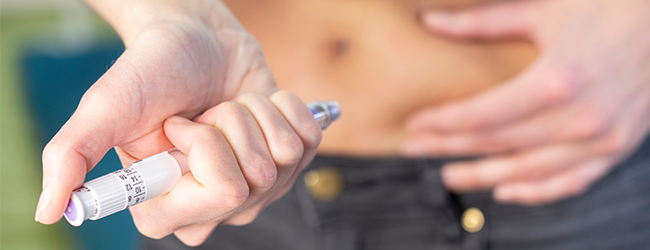How Can Drug Delivery Devices Benefit from Gels and Fluids?
Technological, regulatory, and market forces have been driving advancements in the expanding parenteral (non-oral administration) drug delivery device industry which have improved the lives of millions of people. One is the proliferation and availability of highly effective disease-targeting biopharmaceuticals. Another is the trend toward more convenient, lower cost, in-home and self-administered patient care, often replacing the need for regular and extended IV treatments in the hospital or clinic. A third involves the implementation of microelectronics and digital connectivity -- the integration of data monitoring, tracking and communication systems with the device, patient, and caregiver.

As new parenteral drug products are developed, they often require easy-to-use, precise, consistent, portable, safe, and environmentally stable devices to deliver the active drug formulation, often in liquid or powder form, to the body. The biopharmaceutical industry and their design and manufacturing partners adapt existing devices or engineer new designs for the ever-expanding variety of drug molecules and formulations created by scientists. These devices include autoinjectors, on-body injectors, injection pens, pumps, inhalers (both nasal and pulmonary) and infusion systems. Additionally, training devices exist that help patients practice administration.
Delivery device operation must be matched to the drug therapeutic and stability profile, dosage form, route of administration, dose accuracy requirements, patient population and other parameters necessary for successful product launch in target markets. Functionality, useability, and manufacturability requirements create challenges for designers modifying existing devices for new uses, or those creating entirely new and sophisticated device platforms. If successful, the device yields an improved patient experience, high medication adherence, good clinical outcomes, and strong market penetration.
To drive drug delivery and other events such as injection needle delay time and retraction, devices may contain powerful energy sources such as springs, battery-powered electromechanical drives, or pressurized gas. Carefully designed, innocuous, and precisely controlled lubricants and motion control (damping) gels from Nye assist device designers and manufacturers confronted with design and modification challenges such as:
- Shock absorption
- Control of activation force, vibration, and haptic feedback
- Mechanism timing
- Optimization of metering and signaling
- Unexpected or undesired inter-component friction
Nye’s gels and fluids, which can be customized for the application, either lubricate contacting surface, protect microelectronic electrical contacts, or provide controlled and consistent viscous drag on moving parts.
Precision Motion Control Gels & Fluids Enable:
- Optimum Device Functionality, Useability & Patient Safety
- Stable Device Performance Over the Required Shelf Life
- Proven Performance Over the Operational Temperature Range
Considerations When Selecting Gels & Fluids for Drug Delivery Devices
Quality
To reduce risk, device designers select suppliers and partners with strict quality systems and standards. As an ISO 13485:2016 registered manufacturer, Nye Lubricants’ quality management system meets regulatory requirements for medical devices and related services. Our manufacturing processes are strictly followed and documented to support our customers’ needs for product traceability as well as audit and regulatory support.

Controlled, Stable, & Consistent Physical Properties
Tightly controlled performance is key to ensure every device operates to its design intent, providing each patient with the same experience every time. Nye verifies that our gels and fluids are manufactured reliably with excellent batch-to-batch consistency. We partner with customers to select or design products for program success.
Appropriate Operating Temperature Range
Gels and fluids for drug delivery devices must provide consistent performance within the design limits of the device and over a wide range of temperatures --- from processing, distribution, shipment, and cold storage to device actuation. We design our products to meet these demanding criteria, ensuring devices work as intended every time, in every application.
Material Compatibility
It is important to select a gel or fluid that stays in its intended location, is structurally stable over a long time, and is compatible with all the materials of construction in your design. Some lubricants can plasticize and soften certain plastics and elastomers. Nye offers material compatibility testing and other testing services to ensure you select the best product for your application.
Biocompatibility
Besides standard, specialty and custom motion control gels and fluids, Nye provides a range of biocompatible NyeMed® products for consideration, tested against ISO 10993 protocols. Some of these products are superb at protecting electrical contacts and connectors, which are present in many devices.
Partner with the Industry Experts!
Nye has a strong heritage in the parenteral drug delivery device industry, with the global reach and depth to take on your projects, collaborate with your partners, and bring projects to a successful conclusion. Our experienced R&D scientists work directly with our customers’ design teams to understand their device and performance requirements and can provide custom solutions and specialized testing.
Nye supports our Medical Industry customers from Proof-of-Concept to Industrialization through Post-Production phases…... and far beyond. We’ll be there when you need us!
Want to learn more? Contact us to let us know how we can help with your application.


